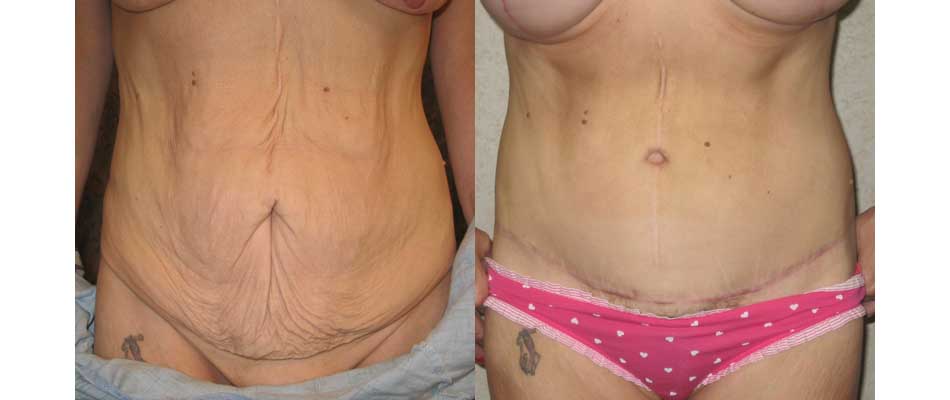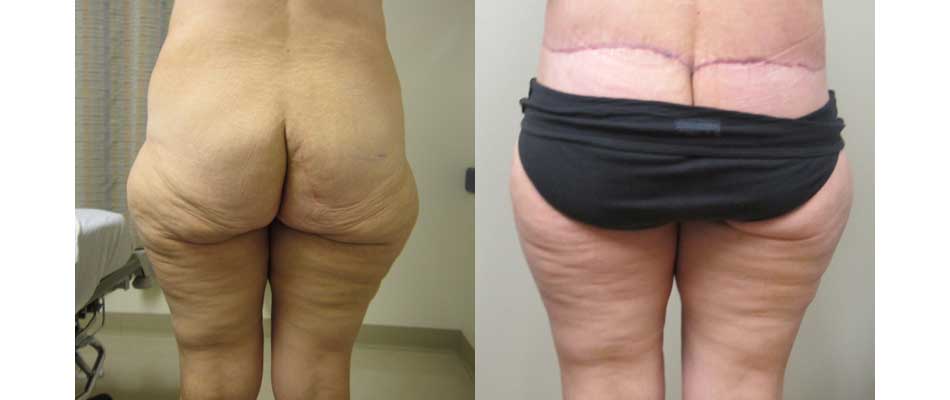Lower Body Lift (Belt Lipectomy)
Is flabby, sagging skin around the lower half of your body taking away from your athletic appearance? Pregnancy, weight fluctuations, or even genetics can stretch skin and reduce its elasticity. The result is unwanted sagging that can lower your self-confidence and leave you feeling uncomfortable in your own skin.
A lower body lift in Barrington by Dr. Madry helps you contour and sculpt your lower body and gives you a slimmer, more natural appearance without excess skin. You can have a tight, fit-looking midsection in just a few weeks.
What is a lower body lift?
A lower body lift, also called a belt lipectomy, is a cosmetic surgical procedure to reshape the mid and lower body. It’s done by tightening abdominal muscles and removing excess skin and fatty areas from the abdomen, thighs, back, and buttocks. It’s a combination of a tummy tuck, thigh lift, and butt lift. All procedures are done during a single surgery. The procedure may use a combination of techniques, including liposuction.
Lower body lift vs. tummy tuck
The lower body lift and tummy tuck both target fat pockets that aren’t tightened up by diet and exercise. The choice between a tummy tuck or a lower body lift is based on the results you’re seeking. A tummy tuck removes excess fat and skin from around the stomach, while a lower body lift reshapes your entire midsection and thighs. Your surgeon will discuss all of your options during your consultation.
How is a lower body lift performed?
At your consultation, you’ll have a physical exam and discuss your:
- Current medications, supplements, and herbs
- Goals for your procedure
- Health history
- Tobacco use
Your surgeon will also:
- Answer your questions
- Discuss your risk factors, likely outcomes, and possible complications
- Discuss your options and recommend the best one
- Take measurements of the areas for surgery
- Take pictures for your medical record
Before your surgery date, you may need to have lab tests, quit smoking, and temporarily stop or adjust some medications.
- You will have general anesthesia or sedation, depending on your procedures and your surgeon’s recommendations. If you have an outpatient procedure, you will need to have someone with you to drive you home.
- Your surgeon will start by making incisions in the targeted areas to remove fat and skin. You may also have liposuction.
- After removing the excess fat and skin and tightening the muscles, your surgeon will close your incisions with deep sutures, stitches, skin adhesives, tapes, or clips. You may temporarily have drainage tubes placed to drain excess blood and fluid.
- You will rest in a recovery area until you are cleared to go home or are moved to a room for an overnight stay.
Depending on the number of targeted areas, the procedure could take up to eight hours.
Recovery from a lower body lift
You may need help at home for several days. You may be on pain medications and will likely need to wear compression garments while you recover to support your tissues and reduce swelling.
Your post-operative instructions will tell you how to take care of your incisions, symptoms that might indicate an infection, the date of your follow-up appointment, and other information that is important to your healing. It’s critical to follow your post-operative instructions carefully for the best possible results.
Most people can return to work in two weeks but need to restrict activities for four to six weeks. It could be six to eight weeks before you are cleared to exercise.
You will notice results immediately, but it can take up to two years to reach the final result.
Who is a good candidate for a lower body lift?
Belt lipectomy isn’t suitable for everybody. While the procedure is typically well-tolerated and safe, the best candidates include those:
- With significant loose soft tissue in one or more areas
- In good health with no conditions that may increase your risk for complications
- At a stable weight
- Who are a non-smoker
- Have realistic expectations for their results
- Who are committed to maintaining a healthy lifestyle
Risks of lower body lift
Every surgery comes with some risk. The risks and potential complications of a lower body lift include:
- Asymmetry in the affected areas
- Bleeding
- Deep vein thrombosis (a type of blood clot)
- Discoloration of skin
- Fat necrosis
- Fluid accumulation
- Infection
- Numbness, changes in skin sensation
- Pain
- Poor wound healing
- Reactions to anesthesia
- Scarring
- Skin loss
- Suture problems
- Swelling
- Tissue damage
How much does a lower body lift cost?
Most insurance plans don’t cover cosmetic procedures. The cost of a lower body lift depends on a number of factors:
- The type of procedures
- Your surgeon’s skill and experience
- Geographic location of the surgery
- Any required medical tests
- Anesthesia fees
- Surgical center or hospital costs
- Prescriptions and compression garments
Cost is an important factor, but it’s also essential that you trust your surgeon. A board-certified surgeon that you feel comfortable with makes your experience less stressful.
“Amazing, talented surgeon. Staff is top-notch. Claire his PA is amazing as well!” – LR






